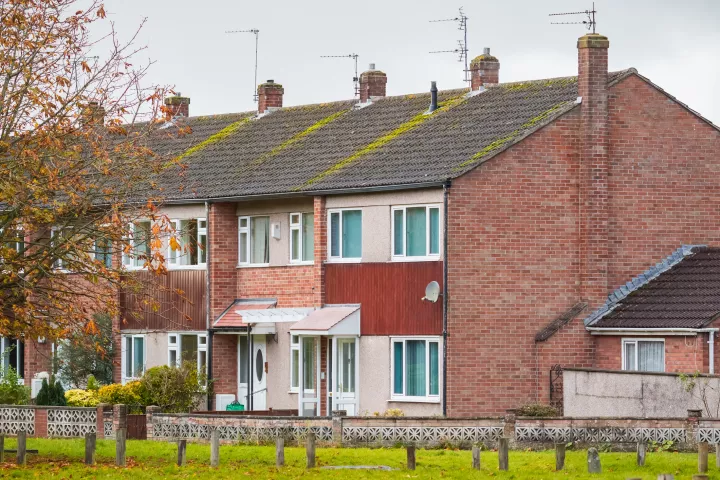The UK Supreme Court has recently handed down judgment in three conjoined appeals, Hotak and others (Appellants) v London Borough of Southwark and another (Respondents) [2015] UKSC 30. The appeals all concerned the duty of local housing authorities towards homeless people who claim to be “vulnerable”, and consequently have “priority need” for the purpose of the provision of accommodation under the homeless legislation.
The decision of the Supreme Court is significant and will have a direct impact on homelessness decisions and homeless applicants.
How the legislation deals with vulnerability and priority need
Under the Housing Act 1996 local authorities have a duty to secure that accommodation is made available for applicants who are homeless and in priority need. Section 189 (1) of the 1996 Act defines priority need, and section 189 (1)( c) outlines that priority need includes “a person who is vulnerable as a result of old age, mental illness or handicap or physical disability or other special reason, or with whom such a person resides or might reasonably be expected to reside.”
Article 5 of the Housing (NI) Order 1988, as amended by the Housing (Amendment) Act (NI) 2010, mirrors these provisions. As such, the finding of the Supreme Court has undoubted relevance within this jurisdiction.
These appeals all centred on the issue as to how this legislation should be interpreted by local authorities. Each of the appellants had applied for accommodation on the basis that they had priority need, however, the local authority issued a negative priority need decision in each case.
Judgement identifies three principal issues
Lord Neuberger’s judgment includes a considerable discussion in respect of many issues surrounding vulnerability.
These preliminary points undoubtedly merit attention; however, the judgment deals with 3 principal issues. In assessing an applicant’s vulnerability for the purposes of determining if they have priority need and ultimately if they are homeless in accordance with the legislation, the Supreme Court considered the following questions:
- To determine whether or not someone is vulnerable, is it necessary to compare the applicant to some other group of people; and if so, who?
- In assessing vulnerability, is it permissible for a local authority to have regard to the support and assistance that an applicant would receive from his household or family if he were homeless?
- What is the effect of the public sector equality duty under s149 of the Equality Act 2010 on determinations of priority need under the Housing Act 1996.
Vulnerability and the long standing Pereira test
The case of R v Camden LBC, Ex parte Pereira [1998] 31 HLR 317 determined that, when assessing priority need, the local authority must ask themselves whether the applicant; “when homeless [will be] less able to fend for himself than an ordinary homeless person so that injury or detriment to him will result where a less vulnerable man would be able to cope without harmful effects.”
As such within the context of the Pereira test it was determined that a comparator was necessary and such a comparator would be “an ordinary homeless person”.
The court noted that it could fairly be said that anyone who is homeless is vulnerable, as such the homeless legislation must contemplate homeless people who would be more vulnerable than many others in the same position. The court emphasised that vulnerability is a relative concept and has to be assessed comparatively.
However, while accepting that a comparator is necessary Lord Neuberger subsequently departed from the Pereira test of “an ordinary homeless person.” The court viewed that “an ordinary homeless person” could have a variety of interpretations, and ultimately could lead to an assessment based on a notional homeless person according to a particular authority’s experience.
“It does not seem probable that Parliament intended vulnerability to be judged by reference to what a housing officer thought to be the situation of an ordinary actual homeless person. Such an assessment would be more likely to lead to arbitrary and unpredictable outcomes than if one takes the ordinary person if rendered homeless, and considers how the applicant would fare as against him.” (para 56)
The court found the proper comparator is “with an ordinary person if made homeless, not with an ordinary actual homeless person.”
What consideration should be given to the support available to an applicant?
The Appellants had argued that support from third parties should not be considered for the purposes of assessing vulnerability. However, the court found that any services and support that would be available to the applicant if he were homeless must be taken into account.
It is acknowledged by Lord Neuberger that this creates an unnatural disincentive for people to assist others, in that if an applicant is assisted by a family member then he may be found to be not vulnerable and ultimately not homeless, while alternatively if a family member refuses to provide support then that applicant may be found to be homeless.
However, the court reconciled this unsavoury prospect by indicating that the purpose of the homeless legislation “is not to reward the virtuous, but to deal with a practical problem.” (para 68)
The local authority should consider the services and support which would be available to the applicant if he were homeless, provided they are satisfied that the third party will provide the support on a predictable and regular basis. If satisfied that such support will be provided, then they should then consider the question of vulnerability on that basis, rather than assuming such support will result in the applicant not being vulnerable. It was noted that there will be cases where an applicant will remain vulnerable, no matter the level of support.
Lord Neuberger referenced Pitchford LJ in his finding in the court below of Hotak, in which he states:
“Even if the reviewing officer is satisfied that the support network would remain in place it may not, in a situation of homelessness, be sufficient to enable the applicant to fend of himself as would the average homeless person. For example, the old age or mental ill health or physical disability of the applicant may be such that no amount of support will enable the applicant to cope with homelessness as would a robust and healthy homeless person.”
Equality legislation
Although the Equality Act 2010 does not apply with Northern Ireland, it is important to be aware of the court’s view on these issues. Section 75 of the Northern Ireland Act 1998 confers the equivalent statutory provision in Northern Ireland. The Northern Ireland Housing Executive has a statutory obligation when carrying out its functions to have due regard to the need to promote equality.
Ultimately, the court found that a local authority’s public sector equality duty is complementary to its duty under the homeless legislation. The court emphasised that a decision must be made with the equality duty well in mind and any local authority officer must focus on
- whether the applicant has a relevant protected characteristic,
- its extent,
- its likely effect, when taken together with any other features, on the applicant if and when homeless, and
- whether the applicant is vulnerable as a result
The impact of this judgment
The move away from the Pereira test provides a more simple test for vulnerability. The local authority must now simply ascertain whether the applicant would be more vulnerable than an ordinary person if he were to be made homeless.
The judgement underlines that decisions on vulnerability must take account of all the applicant’s circumstances.
While the court has found that third-party support can be taken into consideration, the judgment emphasises that the duration and consistency of this support is of paramount importance when an authority seeks to determine whether this support is sufficient to address the applicant’s vulnerability.
Understanding the law as it relates to homeless applicants
Housing Rights will be running the popular Housing Advice Training Programme in Belfast in May and Derry/Londonderry in June. This 4-day course covers all aspects of housing advice including using homelessness legislation.


